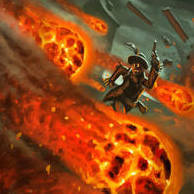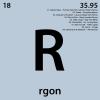-
Posts
2,217 -
Joined
-
Last visited
Reputation Activity
-

-

-

-
 t0wer got a reaction from SaltineCracker in Headphone cable fixing guide
t0wer got a reaction from SaltineCracker in Headphone cable fixing guide
Didn't know if this should be in guides and tutorials, but I figured if someone was looking for this guide, the audio section would be the first place they would look.
for a first time, an actual camera, not a terrible phone camera.
I had a hard time taking pics, a lot of my methods require 2 hands.
so you let your headphone cable fall into a paper shredder.
you can sell them broken on ebay for 1/10th the original price, or fix them yourself.
some of the tools I have.
mandatory
soldering iron
solder
wire cutters
multimeter(not really mandatory, but I wouldn't risk an amp before testing my work)
a packet of saltine crackers hidden behind the keyboard
wire and an 1/8" or 1/4" jack if you intend to replace the entire cable
or heatshrink and lighter if you are just repairing an existing cable
optional
wire strippers
alligator clip helping hands(highly recommended, they are like $3 at harbor freight)
needle nose pliers
I'm not doing a full recable, I'm just fixing the broken section.
but I'll go over some parts of a full recable.
Now to begin
cut off the damaged portion of the cable.
strip both of the cables(the jack end and the headphone end)
I like my wire strippers but the rubber covering was too stretchy and the strippers wouldn't cut it, so I had to use the slow method and use my wire cutters.
be careful as there will most likely be a few separate wires.
these wires had some coating on them so they wouldn't short on each other.
I just took a lighter to them, it's kind of hard to see, but on the red and green cable, towards the tip the color fades away.
tinning the wires, just stick the soldering iron on the wires, and put the solder on the other side of the wires, that way the solder sticks to the wire and not the iron
I had problems with these wires, I don't think my lighter trick really worked, but I eventually got them tinned just putting the iron on them longer than I usually do.
you can kind of see the solder on the end of both wires.
remember to put the heat shrink on before you solder, I've forgotten far too many times and have had to resolder wires.
here is where helping hands are really nice. they make it really easy to position both wires being soldered.
heat up the wires and put the solder on the other side so the solder flows through the wires and doesn't stick on the Iron.
if the wires are properly tinned not much solder should be needed.
make sure you have a good solder joint, I don't really have pics of good vs bad, just look up cold solder joint or dry solder joint.
position the heat shrink over the joint and grab the lighter to compress the heat shrink.
don't hold the lighter in one place, and don't hold it on too long, just long enough to compress the heat shrink.
I'm pretty confident in my work(ok I'm just forgetful ) so I do this after the initial heat shrink, but it's best to grab the multimeter in ohms mode to check the connection.
This is one side of the headphone, and 1 driver measures around 30ohm.(if you measure from the ring to the tip of the jack, it will be over both drivers, so for this pair of headphones was about 60 ohm)
you want to make sure there's no short (0 ohm) and no open (infinite ohm) connection.
I slid a piece of heat shrink over the cable before I started soldering, to cover up all the smaller wires that had to be exposed for soldering.
unfortunately that piece of heat shrink was a few mm short of covering the entire thing, so the shiny parts are electrical tape wrapped around the ends of the heat shrink.
FULL RECABLE PART
this section can very greatly depending on what headphone you are using
to start, open up the headphones, I had to pull off the pads to get access to a few screws
The wire just goes through the casing, you can drill out a hole and stick a jack if you want for a detachable cable.
the back of the driver, you just need to solder the wires on to the little pcb.
they should be color coded, and ground for both sides should be the same color.(2 grounds to one driver doesn't work out too well)
the most common colors I've seen have been red - right channel green - left channel copper - ground and for the jack (this goes for 1/8" and 1/4") you have tip, ring, and sleeve. tip is left channel ring is right channel sleeve is ground if you plan on braiding the wires, I'd suggest labeling the ends with a piece of tape before you start, or you just grab the multimeter at the end to determine what cable goes where. I don't have a pic of the one I made, but here's a pic of the stock braided HE-500 cable.
-

-

-

-

-
 t0wer reacted to Syntaxvgm in Corsir Void
t0wer reacted to Syntaxvgm in Corsir Void
Neither do garbage disposals when compared to razer krakens. -
 t0wer reacted to Oktyabr in Are vintage speakers worth it?
t0wer reacted to Oktyabr in Are vintage speakers worth it?
I used to make a hobby out of flipping some of the mid-range to higher end speakers, especially from the vintage 70's and 80's era. Here is my opinion on it:
It wasn't until "home theater" came along that manufacturers started pushing collections of tiny cubes with a big subwoofer into the arms of people shopping for stereo equipment. Today, the big money maker in retail is 'sound bars' that take up even less room. Before that most stereos were two speakers and only two. M&K sold the first dedicated 2.1 system, for music, and then went on to make some of my all time favorite subwoofers for home theater too... but they never did make a proper floor standing stereo pair.
The golden rule is that it takes a big cone(s) to make big sound. This is why many companies still make stereo pairs... For example the Klipsch "Klipschorn" was first sold in 1946 and is still sold today (MSRP of about US$9000 a pair), and very little has changed in the general design.
Knowledge is key. If you find a pair that look interesting, dig as deep as you can, especially if you can demo them as working and the price seems attractive. The $9000 pair of Klipsch I mentioned? Yeah, if I found a blown up pair of those for a couple hundred dollars I'd take them home in a heart beat. If you don't know what it is you are buying then you are gambling with your money and as in any kind of gambling, most of the time you will loose. A good resource is the audiogon bluebook. There is an annual subscription price (something like $30 a year) but it's pretty informative. Searching the make and model on ebay is another good method.
In a nutshell, condition isn't everything... if the price is right. I've seen vintage "white van" speakers before, believe it or not (google "white van speakers" if you don't know), that looked great, worked fine, but still weren't worth near what the asking price was. On the other hand I've seen speakers with damaged cones or crossovers in need of rebuilding that even at a couple hundred bucks were still a steal of a deal compared to what I could (and usually did) sell them for later.
Good physical condition is the first thing I look for. Especially if they have real hardwood finishes. If you can find a pair with the original boxes, manuals, etc. even better.
Speakers that look great, but have been sitting in storage for the last 20 years, might have some unpleasant surprises for you when you get home. Caps that start to leak, surrounds that crack or turn to dust when you finally start using them again, etc. It's better to haggle on vintage speakers AS IF both of you know that some refurbishment is due... unless they have paperwork proving that professional work was done sometime in the relatively recent past.
A few easy tests?
Inspect the entire outside closely. Look for water damage, cracks, or worst of all, where the seams in the cabinets have started to separate. Check out the grill too, carefully. New grill fabric isn't expensive but it still costs money and is a pain in the butt to learn how to replace it to anything close to OEM condition.
Carefully remove the grills. Make sure that any pins that might attach the grills to the cabinets are all still there, not broke off or glued. If the grill isn't designed to be removed this is *almost* guaranteed to be a waste of time and money, with few exceptions (the original Paradigm Atoms as an example, new around $200, were excellent and the grills did not come off)
If the speaker has any sort of adjustment controls take a note of if the knobs/switches are all there and that they move as you would expect them to.
Gently touch the surround of the speaker itself. If it's foam, lightly rub it with a finger tip just a bit. If it starts to rub off onto your finger it is already badly deteriorated and will need replacement, no matter how good it looks at that moment. A light pinch can also confirm this but be prepared to buy the speakers when the surround breaks in your hand. Accordion style treated fabric surrounds typically last much longer and are generally a much safer bet. Look for a less than perfect glue job where the surround meets the cone. This is usually a sign that they have been replaced at least once before and may be a good thing, even if it doesn't look cosmetically perfect.
Look at the cones themselves and the center caps for any damage. You can get most larger drivers reconed, which isn't exactly cheap, and many places sell replacement drivers too, even for popular vintage speakers. Ebay again may be a real money saver here on parts. Pay particular attention to the screws that hold the drivers into the cabinets. They should all match and should all have perfect paint. Even removing a screw one time will usually leave noticable flaws in the head of the screw and then you only have two questions... "Why?" and "How much is this going to cost me?" Or possibly "How much can I talk down the price because these have obviously been tampered with?"
Part of the collection I used to have:
-
 t0wer got a reaction from Oktyabr in Are vintage speakers worth it?
t0wer got a reaction from Oktyabr in Are vintage speakers worth it?
vintage speakers are a great way to go.
you have to keep an eye out for damaged drivers if you go used speakers vintage or not.
many speakers 20-30 years old need to be refoamed, which isn't a hard and is usually fairly cheap.
but if there's a tear or a hole in the cone, or a big dent in a dust cap I pass on it.
Replaced drivers are a skip from me, and if they only replaced a driver in 1 of the cabinets it's a huge skip.
that is, unless you can find some original drivers.
-
 t0wer reacted to ShearMe in Looking for help with my headset, ps3 and amp set up..
t0wer reacted to ShearMe in Looking for help with my headset, ps3 and amp set up..
Since when did consoles make sense?
-

-

-

-

-
 t0wer got a reaction from Scionyde in Zinc Keycaps?
t0wer got a reaction from Scionyde in Zinc Keycaps?
It might depend on who you get them from, but after seeing stuff like this, I wouldn't touch them.
http://imgur.com/a/8Kr2W#Fqy05LN
-
 t0wer got a reaction from Mujteba in Mayflower Electronics Website Feedback
t0wer got a reaction from Mujteba in Mayflower Electronics Website Feedback
that sounds so much cooler than website developer.
I think I might need to request a job title change...
-
 t0wer reacted to Lutkeveld in List of cheap but good amplifiers
t0wer reacted to Lutkeveld in List of cheap but good amplifiers
Hi LTT people,
Just wanted to share some DIY budget tips with you. A lot of people are looking for cheap amplifiers, that's why you see amps like the Lepai LP2020+ recommended so often.
This list contains some of my favorite amps, ranked from extremely cheap to cheap. Strap them to the back of a bookshelf speaker like the Micca's or Dayton's and you got an amazing Logitech beater.
Most amps have a JST/PH connectors. This has three inputs: left/right/ground. Those three wires can be converted to RCA or 3.5mm for example.
If you're not able to solder you can go for one with a 3.5mm/RCA jack input already onboard.
Prices are including shipping, because shipping from Chinese webshops is often free. Most amps can be found on eBay. Sometimes sites like DX or BG have them too.
But don't get your power supply from China, they suck . You can power them with a Molex connector from your PC (12v) or a laptop power brick (often 19v), depending on the input voltage range.
Output scales with input voltage and speaker impedance (max possible output per channel = input voltage squared divided by two times speaker impedance).
There are a lot of fun upgrades you can do to these boards like modifying input gain, changing the highpassfilter, swapping out elco's and the list goes on.
I recommend buying a PCB that resembles the one on my photo. A board design can make or break the sound, and there are ones out there that break the sound significantly.
Be careful with polarity and shorting things out, because that may break your amp. All amps can take 4-8 ohm speakers, except the TK2050. Going lower than advised may lead to thermal/current issues.
#1.
Chip: TDA7297
Voltage range: 7-18v DC
Max output: 2x 15W
Price minimum: 3 dollars
Yes, you read that right. 3 dollars, that's why some people call it the 'lunch-money amp'.
It's a class AB chip which is often found on a 50x50mm pcb with a big heatsink.
This heatsink is needed because class AB is not very efficient and the inefficiency is converted to heat.
Nice features are the onboard potmeter (volume control), 3.5mm input, 'ON' led.
#2
Chip: TA2024
Voltage range: 9-13v DC
Max output: 2x 15W
Price minimum: 6 dollar
My personal favorite. Because of the high efficiency class D chip a heatsink is not needed.
Nice I/O terminals, high efficiency, good sound.... For 6 dollars what do you want more?
#3
Chip: TDA2030A
Voltage range: 7-21v AC
Max output: 2x 18W (speakers) 1x 36W (subwoofer)
Price minimum: 8 dollar
Most 2.1 amplifiers at this price point are crappy, this one is not.
It's a class AB chip, so heatsinking the chips is recommended.
Sadly it works on AC, but this can be fixed by removing the bridge rectifier next to the big electrolytics.
Then wire your + and - from the DC PSU to the output of the rectifier.
Bass/treble/volume knobs are on the nice looking PCB.
#4
Chip: TPA3116
Voltage range: 18-24V
Max output: 2x 50W
Price minimum: 12 dollar
More volts, more watts.
A 19v laptop PSU brick makes a great PSU for this one.
There are also 2.1 versions of the top pcb (two chips on board)
#5
Chip: TA2020
Voltage range: 9-15v DC
Max output: 20W
Price minimum: 20 dollars
Here we have him: the chip used in the famous Lepai LP2020A+
Went through a lot of crappy revisions to get to where it's at now.
Still not my favorite board, that's the one from YJ, but the Lepai has a nice case, tone control and volume knob with LED.
#6
Chip: TK2050
Voltage range: 12-32v DC
Max output: 2x 50w
Price minimum: 20 dollar
High power amp with a big voltage range.
Recommended impedance is 6-8 ohms.
-----------------------------------
Do you know of an amp that deserves to be in this list? Do you see any mistakes? Please tell me
-
 t0wer reacted to Lutkeveld in List of cheap but good amplifiers
t0wer reacted to Lutkeveld in List of cheap but good amplifiers
Some more amps. Hope this list helps people despite the low response
#7
Chip: TPA3132
Voltage range: 10-25v DC
Max output: 2x 25w
Price minimum: 7 dollar
Awesome value. Small footprint, Volume knob onboard
#8
Chip: TDA7492
Voltage range: 10-26v DC
Max output: 2x 50w
Price minimum: 9 dollar
High power, can be bridged.
#9
Chip: PAM8610
Voltage range: 7-15v DC
Max output: 2x 10w
Price minimum: 6 dollar
General purpose board
-
 t0wer got a reaction from ShearMe in What kind of a splitter/adapter do I need?
t0wer got a reaction from ShearMe in What kind of a splitter/adapter do I need?
I don't think so, that looks like just a stereo splitter.
some sites list the correct one as a headset splitter.
it's a female 3.5mm TRRS to dual male 3.5mm TRS that you need.
-
 t0wer got a reaction from ShearMe in Keep track of which wire is which?
t0wer got a reaction from ShearMe in Keep track of which wire is which?
red can go to black and black can go to red, or red can go to red and black can go to black.
Both channels just need to be setup the same or they will be 180 degrees out of phase and it will sound funny.
-
 t0wer got a reaction from ShearMe in New Eris E5 Active Speakers - sounds horrific - need help
t0wer got a reaction from ShearMe in New Eris E5 Active Speakers - sounds horrific - need help
my guess is, it's a balanced 1/4" connector, and your feeding a stereo signal to it.
theres 2 amplifier channels in each speaker, one for + one for -, not one for L and one for R.
go find a 1/8" > dual RCA adapter/cable and use only that
-
 t0wer got a reaction from ShearMe in Dual Gang Pot for KN-928 Tube Amp
t0wer got a reaction from ShearMe in Dual Gang Pot for KN-928 Tube Amp
you want a lograthmic potentiometer.
go with an alps rk271 if it will fit, cheap pots will be scratchy with every volume change.
-
 t0wer got a reaction from DigitalHermit in will this audio setup with a Raspberry pi work?
t0wer got a reaction from DigitalHermit in will this audio setup with a Raspberry pi work?
you'll need linux to access the file structure to put music on the sd card
it should work, just don't expect it to be plug and play, and expect pandora on a cli not a webpage.



















